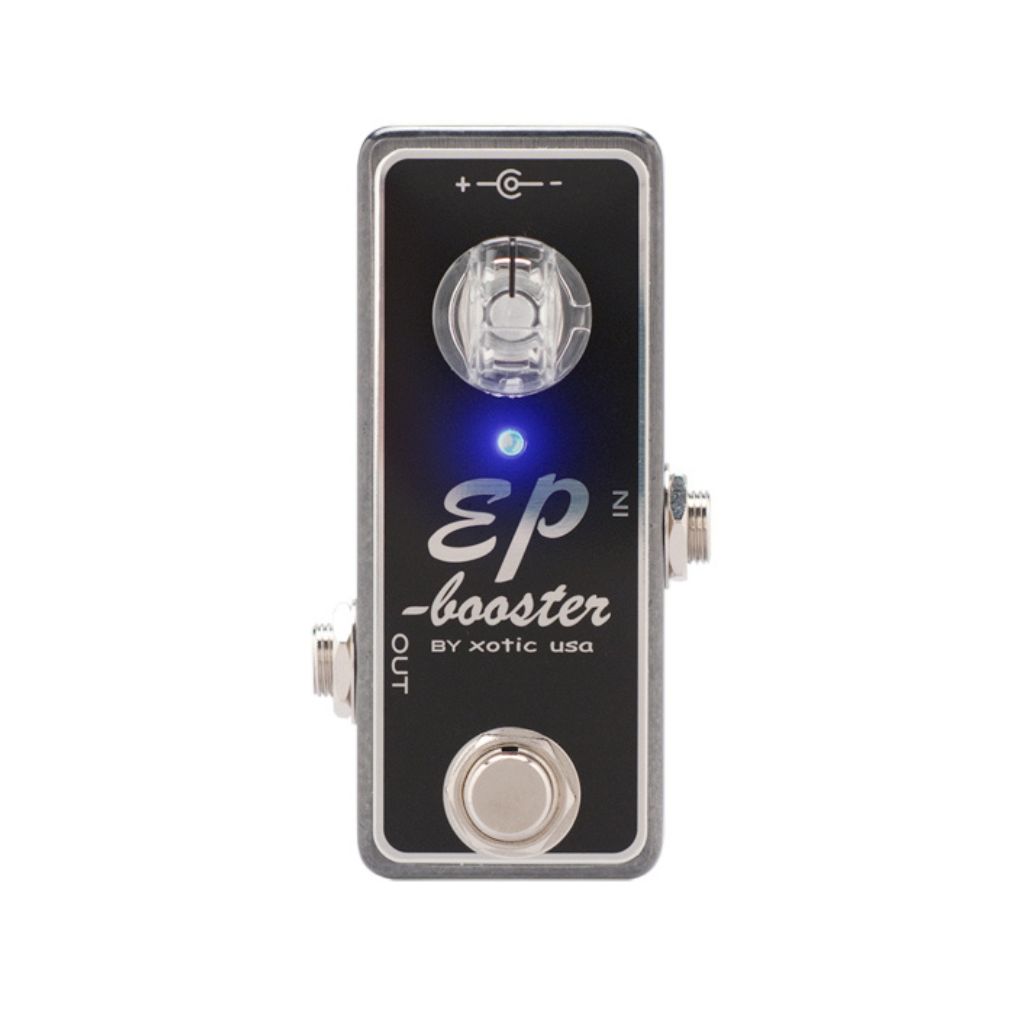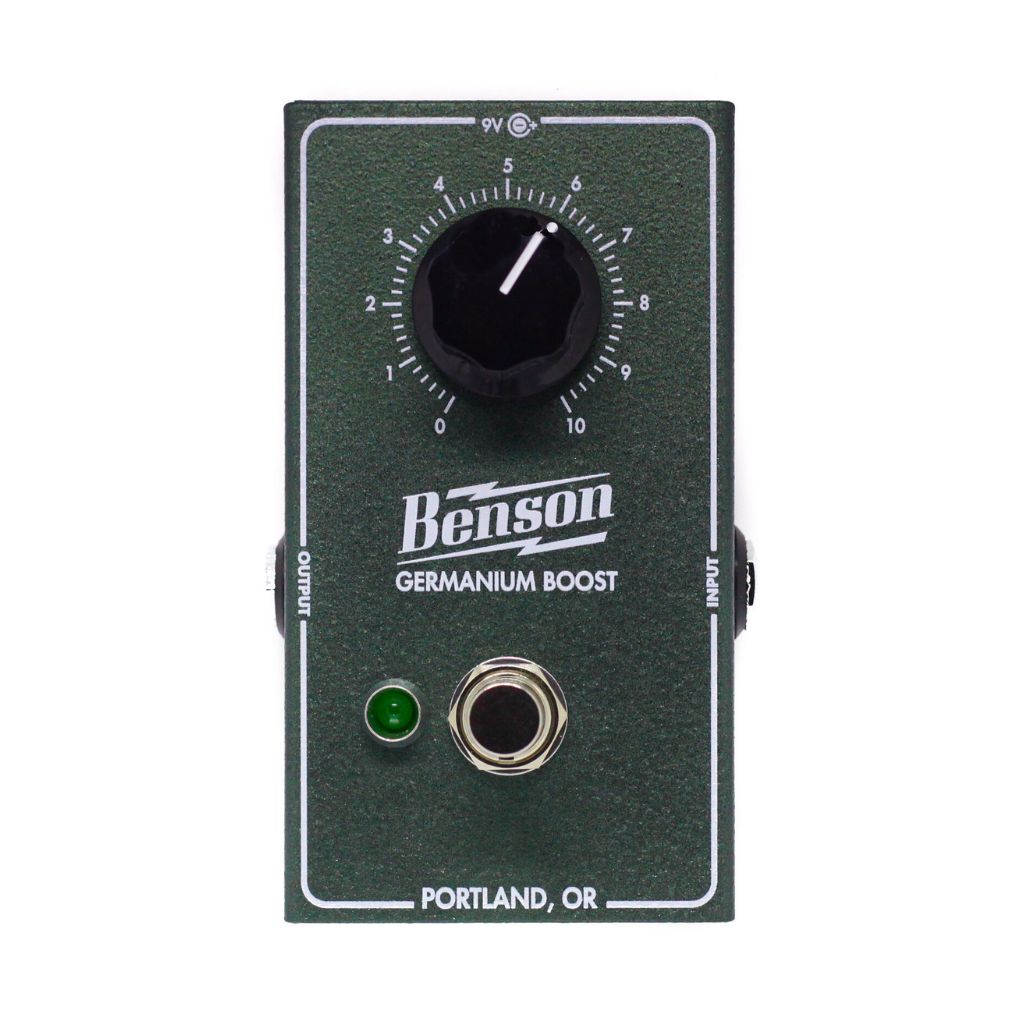Related Tags
The best guitar pedals to buy in 2023: 10 best boost pedals
We all need a boost now and again.
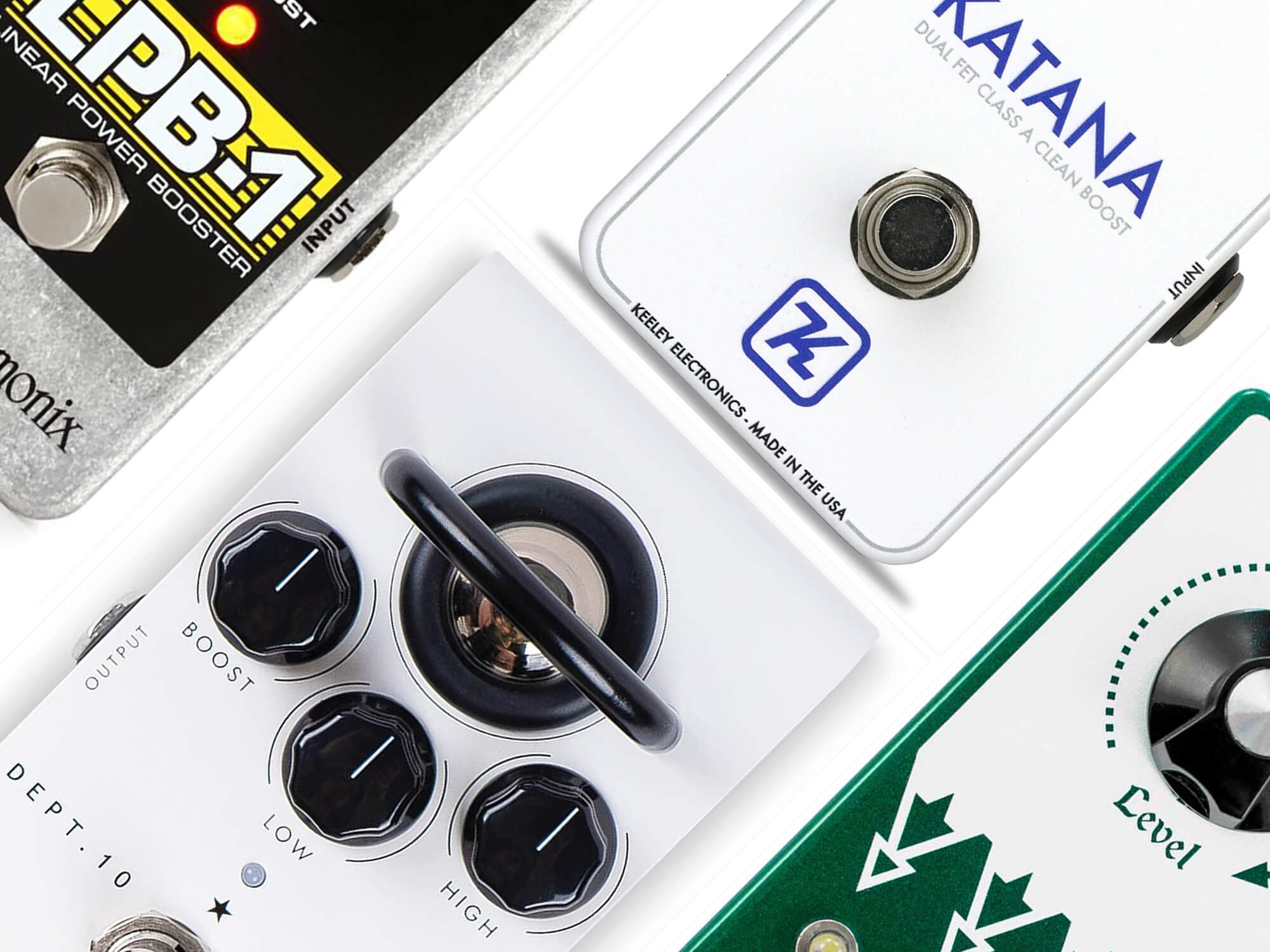
Featured in this article
When you need to make your solos heard, push an amp into natural overdrive or get more control over your volume – a boost pedal is what you need. Here’s our guide on buying one in 2022.
Why do guitarists use boost pedals?
Due to the simplicity of boost pedals, they’re incredibly versatile, and their different applications really depend on where you put them in your signal chain. If you place a boost pedal before an overdrive (or a dirty amp), it will give you more distortion, slamming your signal into the gain section even harder. Place a boost pedal after an overdrive (and before an amplifier with enough headroom) and it will give a pure volume boost without introducing additional distortion – handy for solos!
With very clean boosts, you can even get good results placing them in your effects loop, making them effectively a second master volume control that you can engage with your foot. And if you’re using a tube amplifier, a loud clean boost in your effects loop can also push your power tubes beyond their distorting limit, even more so than you could do by cranking your master volume. This is great for creating incredibly thick power amp distortion, however it does mean that your amp will be working at its upper volume limit – so maybe wait until the neighbours are definitely away…
But beyond simple gain staging, boosts have plenty of other applications. Say you use two guitars across a set, one with significantly quieter pickups than the other. A boost at the start of your signal chain can compensate for this volume loss, meaning the rest of your rig won’t need to be adjusted. Boosts can also ‘sweeten’ the sound of other pedals, without necessarily making them louder or more distorted – for instance a modulation pedal that sounds a little thin can be brought back to life with a boost.
Always-on boosts can also function as buffers. Without getting too far into the weeds of inductance, impedance, capacitance and so on, buffers are essential to retain high end in a rig with lots of patch cables, true-bypass pedals and long leads between your guitar, ‘board and amp. In short: an uninterrupted length of cable (including true-bypass pedals) works as a very weak capacitor, the same component used in your guitar’s tone control to filter out treble frequencies. And so, you might notice that when you’re running through your ‘board with all the pedals bypassed, your sound is a little duller than when you plug straight into your amp.
A boost pedal breaks up this length of uninterrupted audio cable and strengthens your signal, without necessarily adding volume in the process. Using a booster as a buffer, rather than a dedicated buffer pedal, also has the added bonus of giving you more control over your signal level.
What is a clean boost?
Across this list you’ll see the phrase ‘clean’ boost, as well as ‘transparent’ and ‘treble’ boosts: all the different types of boosts can be a little confusing for the uninitiated, so let’s clear up some terms.
Firstly, a ‘clean’ boost is a boost pedal that doesn’t introduce any sort of limiting to the signal; it responds linearly to its input. With a clean boost, you double the input volume, and the output volume is also doubled. With a limiting boost, that’s not necessarily the case.
The word ‘transparent’ is used to refer to boosts (and overdrives) that do not alter the general frequency content of your sound. Put equal parts treble, bass and midrange into a transparent boost, and expect similar ratios between frequencies out the other end. While a lot of clean boosts are also transparent, some do occasionally offer EQ controls to boost or cut certain frequencies. And some boosts are neither clean nor transparent…
…Which brings us onto the (slightly confusingly-named) category of treble boosters. Rather than purely introducing more high-end into your signal, treble boosters also introduce some harmonically-rich upper mids, and cut a little bit of bass, often in quite an unrestrained manner that verges on overdrive. For an audio demonstration, check out basically any Brian May solo or the intro riff to Black Sabbath’s Into The Void – it’s a very vocal sound, one that really helps a guitar cut through a bass-heavy mix. These are a particularly excellent combination with old-school voiced tube amps, and fuzz pedals.
The best boost pedals to buy in 2022 at a glance:
- Benson Germanium Boost
- Blackstar Dept. 10 Boost
- Fredric Effects Accomplished Badger MKII
- Keeley Katana
- Electro-Harmonix LPB-1
- Xotic EP Booster
- TC Spark Mini
- EQD Arrows
- Teisco Boost
- MXR Micro Amp
Benson Germanium Boost
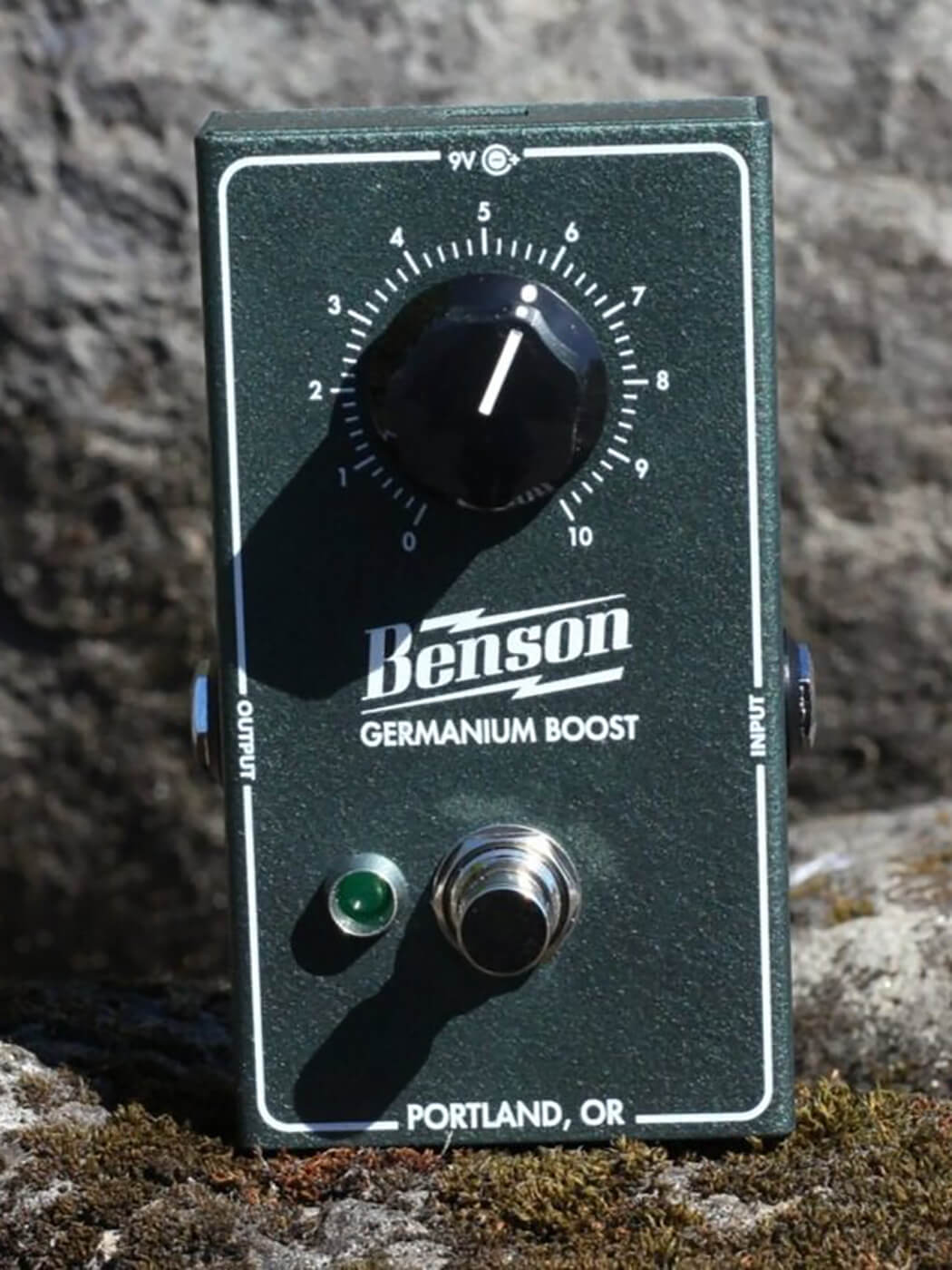
+ Clean, full-sounding boost
+ Great sound with stable operation
– Expensive
The Benson Germanium Boost is an offshoot of Benson’s Germanium Fuzz pedal, developed while the brand was attempting to achieve more temperature-stable results than you would normally expect from germanium. Here the boost is clean and transparent, with just a single knob to increase volume – the voltage-controlled biasing technology keeping the Boost’s sound consistent across the gain range.
The circuit also has a high-headroom, high-impedance input section, meaning that no unwanted compression or distortion will be introduced, and the sound won’t be thinned out by an impedance mismatch, especially if the pedal is being placed after others.
Price: £199 / $199
Description: Germanium-based clean boost with self-biasing technology
Blackstar Dept. 10 Boost
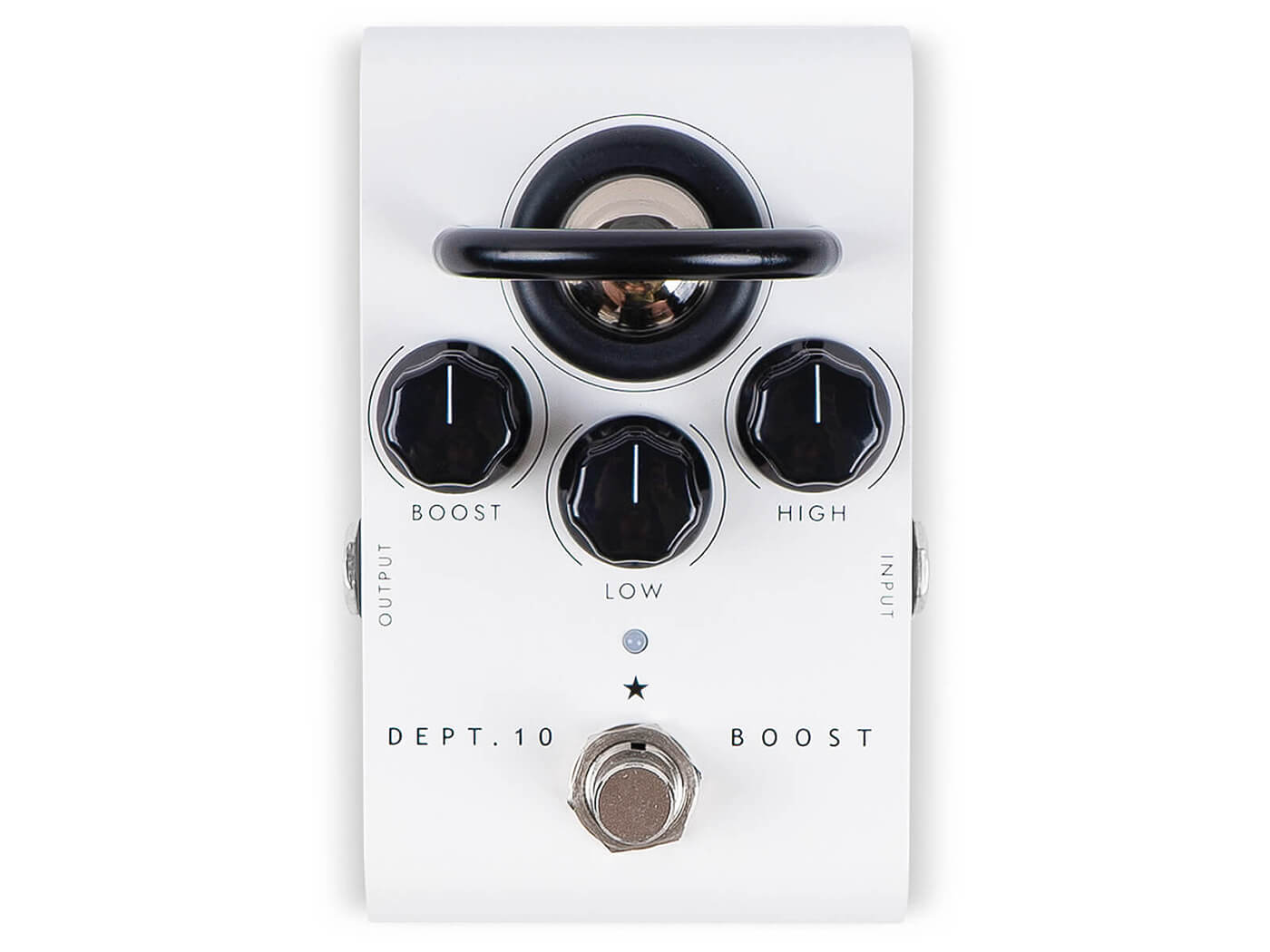
+ Real valve feel
+ High-voltage valve operation for full headroom potential
– Not completely linear
The Dept. 10 Boost is the smallest and simplest of the Dept. 10 pedals. It is a class A boost, running its ECC83 valve at high voltage for maximum headroom. The Dept 10 Boost gives you a great balance between a clean, relatively linear response, and some valve reactiveness mixed in for a more ‘natural’ playing feel and sound. On the face of the pedal is also an active two-band EQ, which cuts or boosts treble and high frequencies, meaning you can adjust your sound even further.
Price: £149 / $219.99
Description: Valve-driven boost with two-band EQ and high-voltage operation
Fredric Effects Accomplished Badger MKII

+ Unique, dual-stage design
+ High level of control over gain levels
– Not for those who need a completely clean boost
Fredric Effects’ Accomplished Badger MKII isn’t a clean boost – instead, it’s a hairy, unrestrained boost with an op-amp gain stage driving a germanium boost. There are controls for op-amp gain, transistor gain, and overall volume. The op-amp gain will give you a cleaner boost, but crank the transistor gain and you start to get into the territory of a very low-gain fuzz.
Importantly, MkII adds a charge pump to increase internal headroom, and an audio-grade transformer on the output stage for a more pleasant saturation.
Price: £139.99
Description: Dual-stage op-amp and germanium transistor based character boost
Keeley Katana Mini
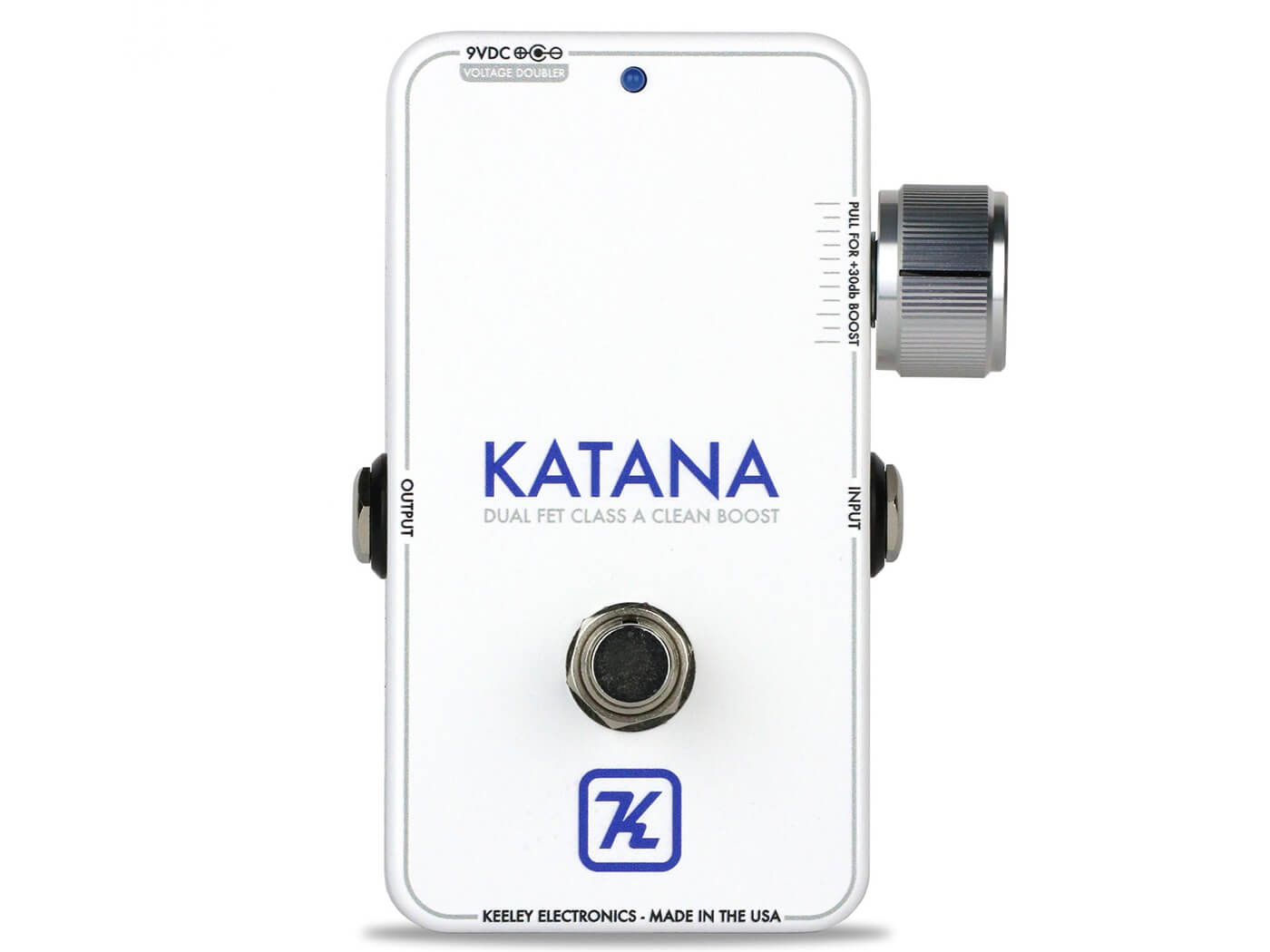
+ Extra tonal features are a nice touch
+ Affordable and compact
– Internal dip switches not easily accessible
An absolutely classic clean boost shrunk down into miniature form, the Katana Mini is a compact, simple boost with a couple of neat tricks up its sleeve. While the full-size Katana has an extra gain stage accessible by pulling out the volume knob, here that extra push is integrated into the latter portion of the volume knob’s sweep.
Internally, there are also dip switches to engage a treble cut – to keep any piercing highs in check – and a high gain mode, for an extra 10dB of boost.
Price: £99 / $99
Description: Compact clean boost
Electro-Harmonix LPB-1
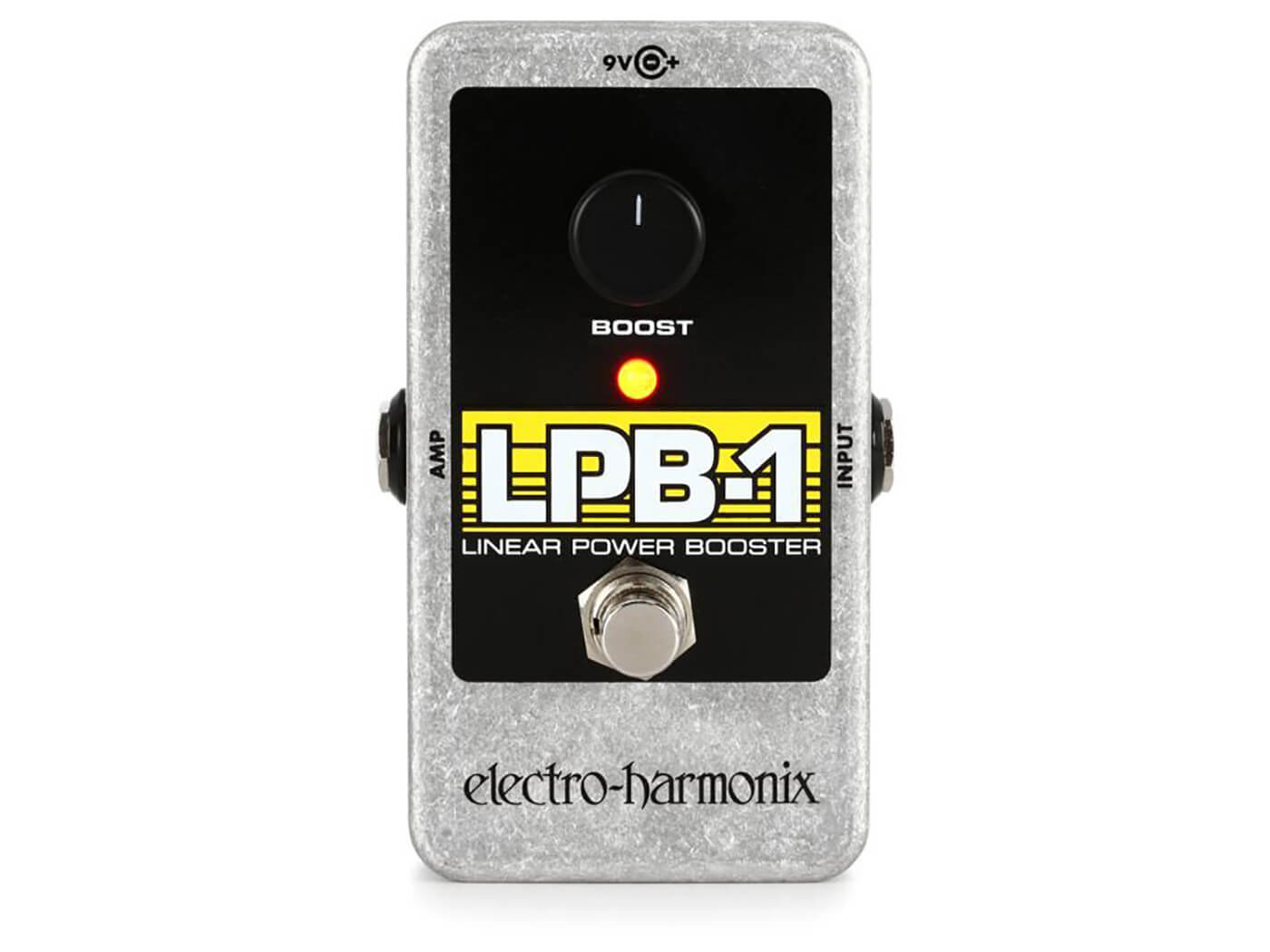
+ Pure clean boost
+ Very affordable
– Not exactly feature-rich
Mike Matthews introduced his first booster in 1968 in an attempt to produce a distortion-free sustainer. It’s a truly down-to-basics clean boost (the circuit is essentially a single transistor and a volume knob), perfect for a no-nonsense, utterly clean increase in volume
Originally, the LPB-1 was housed in a box with a protruding jack that plugged straight into a guitar. The current production version is billed as a spot-on reissue, but it’s housed in a stompbox enclosure with a footswitch and a boost control.
Price: £39 / $44.10
Description: Pure clean boost with single control
Xotic EP Booster
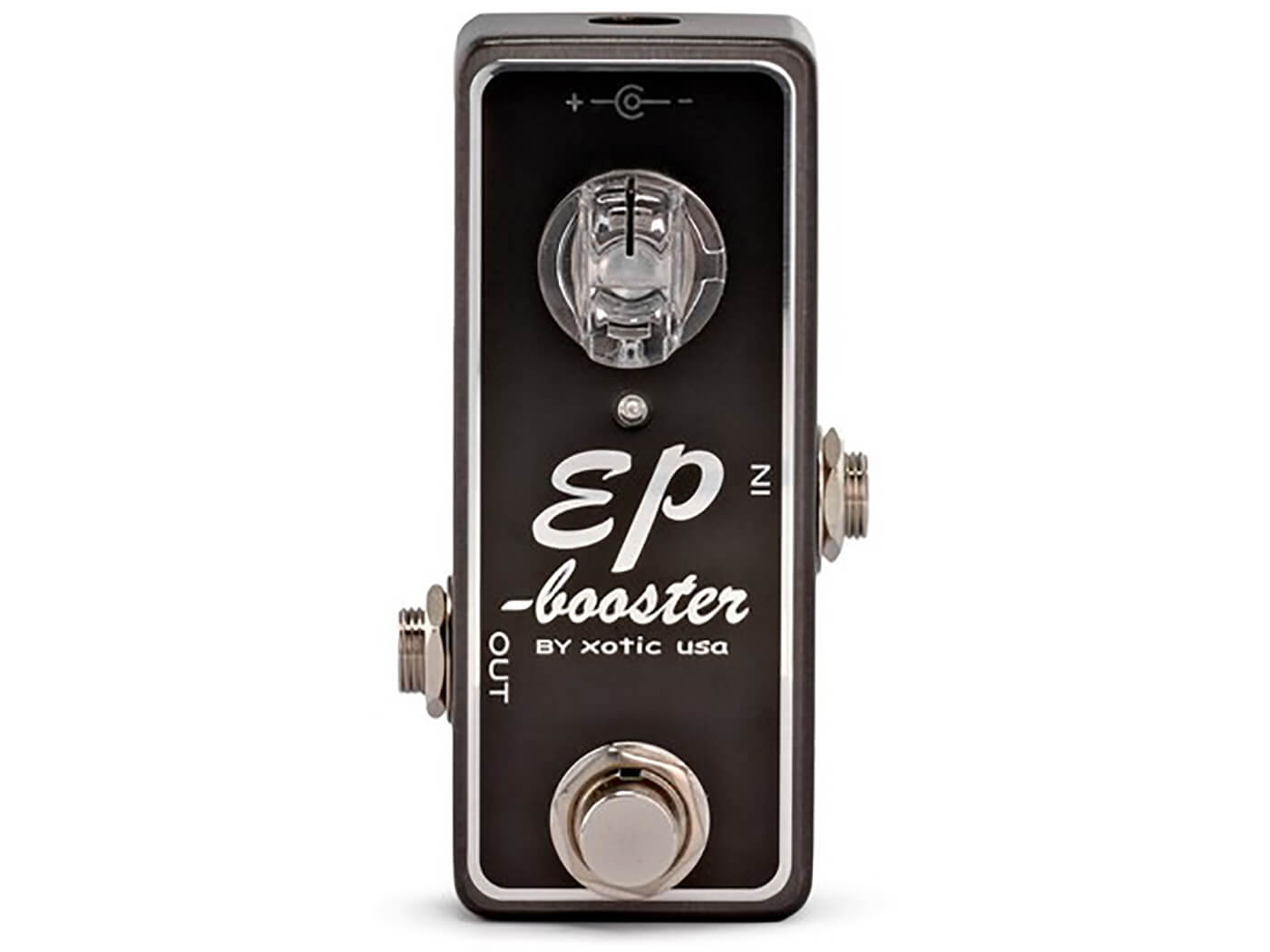
+ Famed Echoplex preamp tones
+ Versatile set of EQ shapes
– Not for those who need a flat, transparent boost
Jimmy Page, Eric Johnson and Eddie Van Halen famously used the Echoplex EP3 preamp as a boost, but few would want to carry a bulky tape echo to gigs these days. The EP Booster is a mini pedal containing an EP3-style preamp with internal boost frequency and EQ setting switches. The EP Booster is best suited to those looking for a versatile booster that can provide clean boosts, saturated overdrives and everything in between.
Price: £119 / $124
Description: Echoplex preamp-inspired boost pedal
TC Electronic Spark Mini
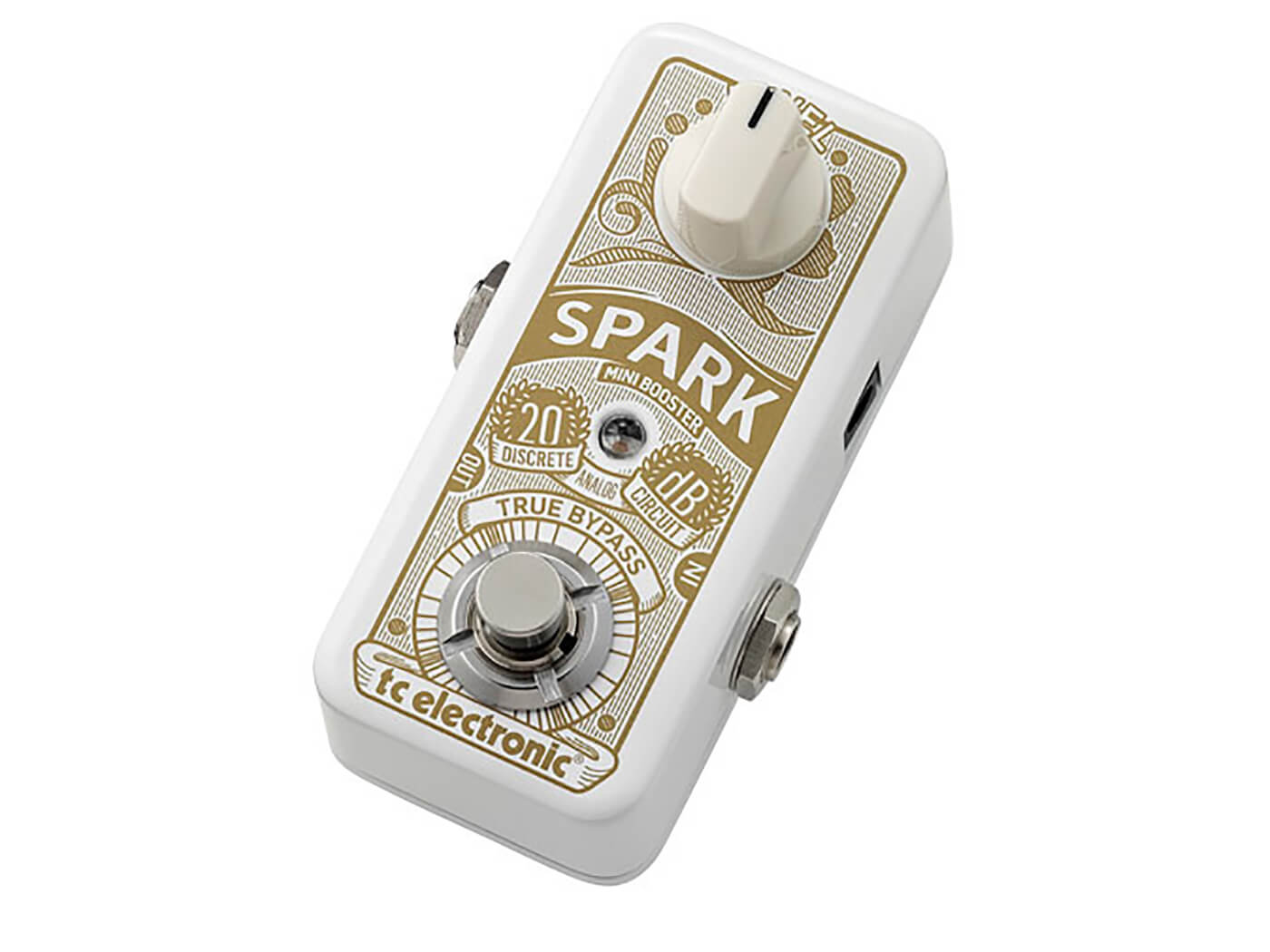
+ Affordable
+ Clean
– Not many extra features
The TC Electronic Spark is ideal for guitarists with a mid-range budget looking for more than just a booster with more than just a great boost range. This pedal’s 26dB boost range should cover most of your boost needs, but the Electronic Spark also has an ace up its sleeve: PrimeTime technology. This handy piece of tech allows you to engage the boost momentarily, keeping it on until you take your foot off the switch – particularly useful for boosting specific riffs or solos.
Price: £47 / $59
Description: Compact linear clean boost
EarthQuaker Devices Arrows

+ Tightens up higher-gain sounds
+ Works especially well with fuzz
– Character boost rather than clean
EarthQuaker Devices is known for some of the best boutique-style pedals on the market right now, and the Arrows V2 is a prime example. Though some of the company’s other creations are complex and nuanced, this is a no-nonsense preamp booster built to boost or cut your signal. As you turn up the knob, you’ll tighten lows, boost mids and add sparkle to highs. This pedal is great if you’re looking to push an amp or clean up a muddy pedal.
Price: £118 / $109
Description: Gain-shaping preamp booster
Teisco Boost
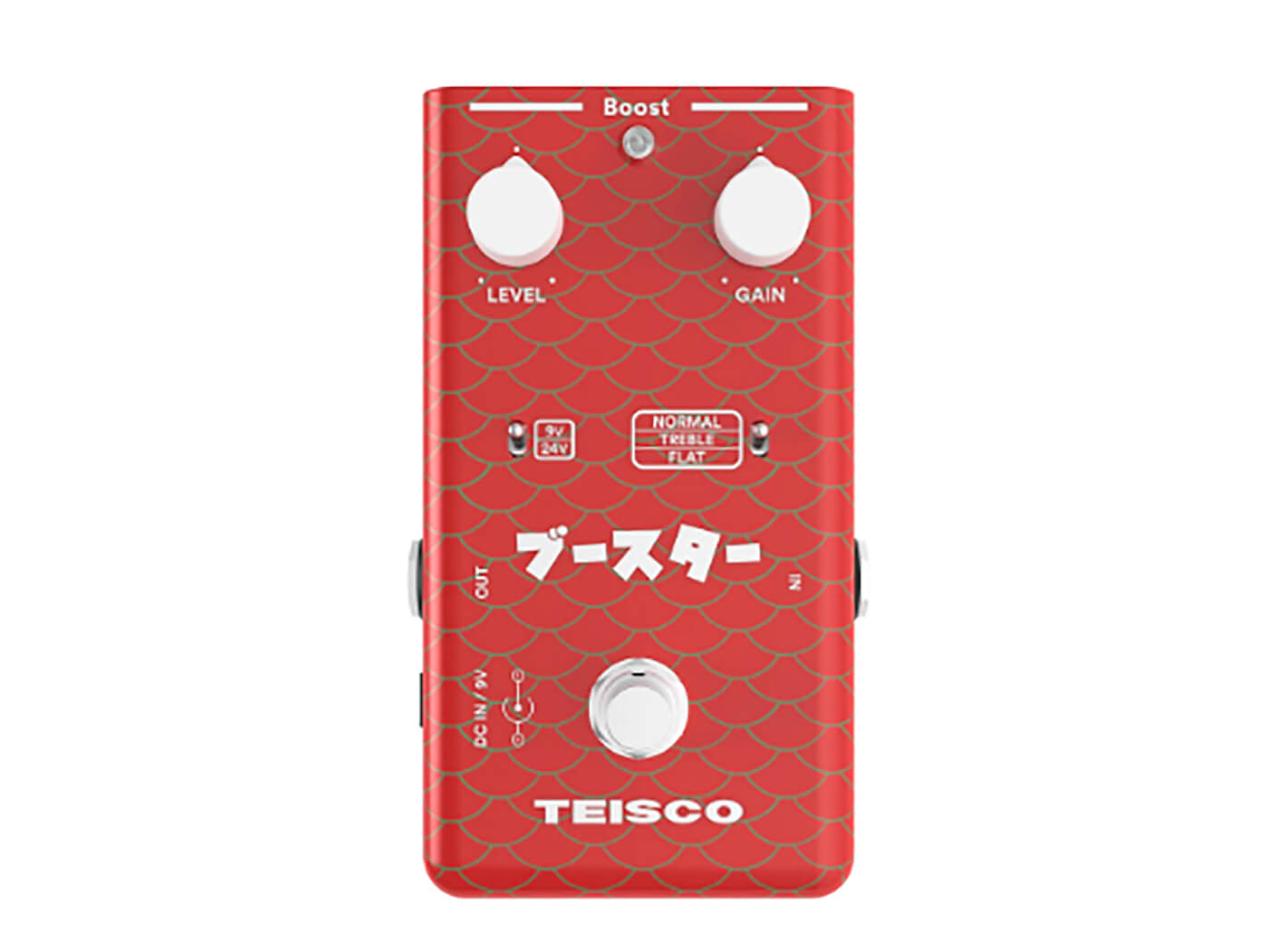
+ Classic EP-style boost sounds
+ Plenty of tone-shaping options
– Fair amount of pedalboard real-estate for a boost
Teisco’s bold yet quirky multi-mode FET booster, simply named Boost, is a sleek stomper that has a few more controls than a solitary boost knob. It features level and gain knobs as well as toggle switches for voltage and EQ settings, resulting in a more versatile pedal. The Boost’s EQ switch is what defines the pedal. The Flat setting delivers a clean boost, while normal rolls off the bass, and treble dials in some Rangemaster-style bite.
Price: $129
Description: Echoplex preamp-inspired boost
MXR Micro Amp

+ Pure clean boost
+ Simple operation
– Not many extra features
The MXR M133 is perhaps the most ubiquitous boost pedal around, and for good reason too. It’s affordable, easy to use and provides excellent boost range. It provides up to 26dB of boost, has a single volume knob to fiddle with and will set you back less than £100. If you have an extremely sharp ear, you’ll notice a sprinkling of extra top-end when you kick it on, but otherwise it’s as clean as it gets.
Price: £89 / $89.99
Description: Discrete clean boost
Check out our other buyer’s guides here.

